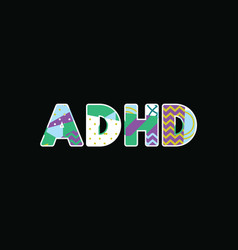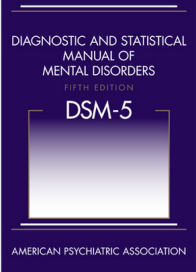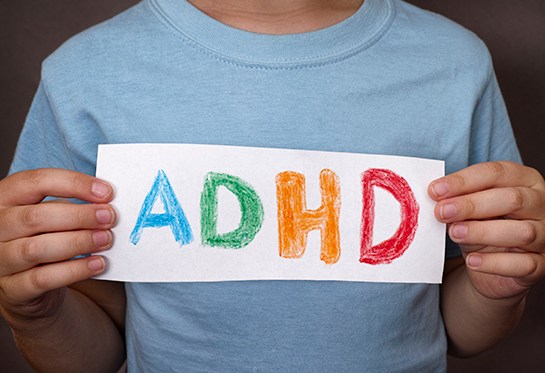Do you know someone who has been diagnosed with ADHD? If so, you may be wondering what this means. The fifth edition of the Diagnostic and Statistical Manual of Mental Disorders (DSM-5) changed the way ADHD is diagnosed and treated. In this blog post, we will discuss the facts about DSM-5 ADHD: what it is, how it is diagnosed, and how it is treated.
Contents
What Is ADHD?
 ADHD is defined as a “persistent pattern of inattention and/or hyperactivity-impulsivity that interferes with functioning or development.” This condition is often first diagnosed in childhood and can persist into adulthood.
ADHD is defined as a “persistent pattern of inattention and/or hyperactivity-impulsivity that interferes with functioning or development.” This condition is often first diagnosed in childhood and can persist into adulthood.
There are three types of ADHD: inattentive type, hyperactive-impulsive type, and combined type. Symptoms of inattention may include difficulty sustaining attention, easy distractibility, disorganization, procrastination, and forgetfulness.
Hyperactive-impulsive symptoms may include fidgeting, difficulty remaining seated, excessive talking, and blurting out answers before questions have been completed. A combined type is diagnosed when a child shows symptoms of both inattention and hyperactivity-impulsivity.
Only a professional can give an accurate diagnosis with the use of standardized tools and assessments. A comprehensive evaluation is required to develop a treatment plan for anyone who is suffering from ADHD.
What Is DSM-5?
DSM-5 is the fifth edition of the Diagnostic and Statistical Manual of Mental Disorders (DSM). The DSM is published by the American Psychiatric Association (APA) and provides a common language and standard criteria for the classification of mental disorders.
It is a widely used resource for clinicians, researchers, and pharmaceutical companies. The DSM-V was published in 2013 and made some significant changes to the way ADHD is diagnosed.
According to studies, the prevalence of ADHD has increased over the years. In the United States, it is estimated that about 11% of children between the ages of four and 17 have ADHD. If you are a parent of a child with ADHD, you are not alone. There are many resources available to help you better understand and manage your child’s condition.
What Are The DSM-5 Criteria For ADHD?
 There are nine symptoms of ADHD in the DSM-V, and a person must have at least six of them to be diagnosed with the disorder. The symptoms are divided into two categories: inattention, and hyperactivity/impulsivity.
There are nine symptoms of ADHD in the DSM-V, and a person must have at least six of them to be diagnosed with the disorder. The symptoms are divided into two categories: inattention, and hyperactivity/impulsivity.
Inattention
- Often fails to give close attention to details or makes careless mistakes in schoolwork, at work, or with other activities.
- Has trouble sustaining attention in tasks or play activities.
- Does not seem to listen when spoken to directly.
- Does not follow through on instructions and fails to finish schoolwork, chores, or duties in the workplace (not due to oppositional behavior or failure to understand instructions).
- Has trouble organizing tasks and activities.
- Try to avoid things, dislike, or is reluctant to do tasks that require sustained mental effort (such as schoolwork or homework).
- Loses things necessary for tasks or activities (e.g., school materials, pencils, books, tools, wallets, keys, paperwork, eyeglasses, mobile telephones).
- Is easily distracted by irrelevant stimuli.
- Is often forgetful in daily activities.
Hyperactivity/impulsivity
- Often fidgets with or taps hands or feet, or squirms in seat.
- Leaves seat in situations when remaining seated is expected.
- Often runs about or climbs excessively in situations where it is not appropriate (adolescents or adults may be limited to feeling restless).
- Often has difficulty playing or engaging in leisure activities quietly.
- Is often “on the go” acting as if “driven by a motor”.
- Often talks excessively.
- Blurts out answers before questions have been completed.
- Often has trouble waiting for one’s turn.
- Often interrupts or intrudes on others (e.g., butts into conversations or games).
The DSM-5 ADHD criteria are simply based on the symptoms a person is displaying. If you have six or more of the symptoms from either category, then you would likely be diagnosed with ADHD. However, it’s important to note that these symptoms must be present for at least six months and to a degree that is greater than what is typically seen in people of the same age range.
Additionally, these symptoms must cause impairment in at least two areas of life, such as school, work, or social interactions. And finally, the symptoms must not be better explained by another mental disorder. So with these things, criteria can confirm or rule out a diagnosis of ADHD.
Who Can Diagnose ADHD From DSM-5?
 DSM-5 is a manual that provides guidelines for diagnosing mental disorders. This can be used by professionals to help identify individuals with ADHD. It is important to note that a diagnosis of ADHD should only be made by a qualified professional, such as:
DSM-5 is a manual that provides guidelines for diagnosing mental disorders. This can be used by professionals to help identify individuals with ADHD. It is important to note that a diagnosis of ADHD should only be made by a qualified professional, such as:
- Psychiatrist
- Psychologist
- Licensed clinical social worker
These three types of mental health professionals are trained in diagnosing mental disorders, such as ADHD. They can also provide treatment for individuals with ADHD. For example, a psychiatrist can prescribe medication for ADHD, while a psychologist can provide therapy.
It is important to get an accurate diagnosis of ADHD from a qualified professional. This is because the symptoms of ADHD can be similar to other mental disorders, such as anxiety or depression. An accurate diagnosis is important in order to get the most effective treatment for ADHD. If you think you or your child may have ADHD, it is important to seek professional help.
How To Diagnose It?
The diagnosis of ADHD can be made by a qualified mental health professional, such as a psychiatrist, psychologist, or clinical social worker. A medical doctor may also make the diagnosis if he or she has special training in ADHD and is familiar with your medical history.
There is a method of complete diagnosis of ADHD which involves a comprehensive assessment. This assessment includes:
- A clinical interview with the patient and/or parents or guardians
- A review of the patient’s medical, social, and family history
- Observations of the patient’s behavior
- Psychological testing
- Questionnaires completed by patients, parents, or teachers
The diagnosis of ADHD is usually made when a person exhibits several symptoms of inattention and/or hyperactivity-impulsivity that are present before the age of 12, last for at least six months, and cause problems in more than one area of his or her life.
It is important to note that people with ADHD may not have all of the symptoms listed above. In addition, the symptoms may vary in severity from person to person. A comprehensive evaluation by a qualified mental health professional can provide an accurate diagnosis and develop an appropriate treatment plan.
What To Do After DSM-5 ADHD Diagnosis?
When it comes to treatment, there is no one-size-fits-all approach to managing DSM-5 ADHD. The most effective way to treat the condition will vary from person to person, depending on the severity of symptoms and how they present themselves. Here are some general tips for treating ADHD:
Create a routine and stick to it
Creating a routine is an essential part of managing ADHD. Having a set schedule for the day can help to minimize distractions and make it easier to focus on tasks. Because people with ADHD often struggle with impulsivity, it can also be helpful to plan ahead and make decisions in advance.
Break down tasks into smaller goals
Trying to accomplish too much at once can be overwhelming, especially for those with ADHD. Breaking down tasks into smaller goals can help to make them feel more manageable and increase the likelihood of completing them. For instance, rather than trying to clean the entire house in one day, focus on cleaning one room at a time.
Exercise regularly
 Research has shown that exercise can be an effective way to help reduce ADHD symptoms. Exercise can improve focus, concentration, and energy levels, as well as reduce impulsivity and hyperactivity. Exercise is also a great way to release excess energy and improve mood. There are a few things to keep in mind when exercising with ADHD.
Research has shown that exercise can be an effective way to help reduce ADHD symptoms. Exercise can improve focus, concentration, and energy levels, as well as reduce impulsivity and hyperactivity. Exercise is also a great way to release excess energy and improve mood. There are a few things to keep in mind when exercising with ADHD.
- First, it’s important to find an activity that you enjoy and will stick with.
- Secondly, it’s important to set realistic goals.
- And lastly, be sure to warm up and cool down properly to avoid injury.
Get enough sleep
Sleep plays a crucial role in brain function and can impact ADHD symptoms. People with ADHD often have trouble falling asleep and staying asleep. This can lead to fatigue, which can make ADHD symptoms worse. aim for at least eight hours of sleep each night. When you get enough sleep, you’ll feel more rested and able to focus during the day. It helps you to better manage stress and makes it easier to control your impulses.
Talk to a therapist
A therapist can help you manage your ADHD symptoms. They can also help you with any comorbid conditions you may have. If you’re struggling in school or work, a therapist can also provide guidance and support. There are many different types of therapy for ADHD. Some common ones include:
- Cognitive behavioral therapy (CBT): This type of therapy helps you change negative thinking patterns and behaviors.
- Interpersonal therapy: This therapy focuses on your relationships with others.
- Family therapy: This type of therapy can help improve communication and conflict resolution within your family.
Join a support group
A support group is considered a “treatment” for ADHD. It can help you feel better and provide valuable information and resources. There are many types of support groups, including in-person groups, online groups, and parent-led groups. You can find a support group by searching online or asking your doctor or therapist for recommendations. Once you find a group that interests you, call the contact person listed to get more information.
So, these are some common tips that can help you better understand and manage your or your child’s ADHD. If you have any concerns, be sure to talk to your doctor or mental health professional. They can help you create a plan that’s best for you or your child.
Conclusion
To conclude, DSM-5 ADHD is a criterion to be used in the diagnosis of attention deficit hyperactivity disorder. This criterion is important to consider when thinking about treatment for ADHD as well. While medication can be helpful for some, it is not the only form of treatment available and other options should be considered as well.
Only with a proper diagnosis and treatment, people with ADHD can lead happy and successful lives. Therefore, you should not hesitate to seek professional help if you or your loved ones are showing symptoms of ADHD.
For more tips and guidance, you can reach out to Therapy Mantra. The team of professional counselors is more than happy to help you in your journey to recovery. Contact us today to learn more about our services. You can also book an online therapy session or download our free Android or iOS app.


